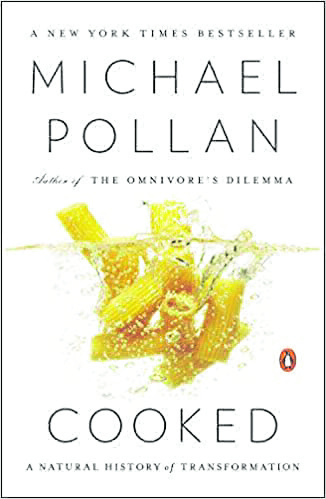
Let me recommend “Cooked” on Netflix. After having seen all four episodes, it would seem that Michael Pollan, host and author of “Cooked: A Natural History of Transformation,” on which the series is based, would like people to cook again. He says, “When we learned to cook is when we became truly human. We are the only species who cook.”
Pollan is an American author, professor of journalism at UC Berkeley Graduate School of Journalism. He is known for his other books like “The Omnivore’s Dilemma: A Natural History of Four Meals,” a gardening book, and one about architecture.But when he says “cooking,” it’s really doing so the old way. Pollan asserts that you only have to look at the ingredients in a canned food product and know that commercial food companies don’t cook the way you do, because the many ingredients listed are not even found in your kitchen pantry.
4 episodes
The series is divided into four episodes—Fire, Water, Air, Earth—the same as the four elements the ancient Greeks proposed.
“Fire” delves into how ancient people cook, as exemplified by today’s aboriginal Martu people of Australia who hunt iguana for the women, and wild turkey and kangaroo for the men, then build a fire to cook them. Keeping the fire going is the job of the cook, while in Northeastern Carolina it’s the pit master, so a whole pig can be barbecued. Both methods take hours, which will not do in today’s fast food world.
“Water” evokes the slow cooking of stews and braises by mothers. Stews constituted what families considered comfort, filling food. The episode takes one to India and the industry of “tiffin cooking.” It isn’t fast-food cooking as we know it, because the method is like home cooking. It gives work to many people, the cooks and the ones who deliver the tiffin to many offices.
‘Less time to cook’
The series questions commercial food companies whose mantra is “less time to cook.” However, with processed food came public health problems. In 1980, Type 2 diabetes in children did not exist in the United States, says Pollan.
“Air” is mainly on bread and its basic ingredients of flour, water, a little salt and air. When you slice bread the old way, you see holes where air resides.
Bread, says Pollan, is “one of the first food processing technologies.” The series takes you to Morocco, where bread making starts with wheat being harvested, milled, then made into dough, partitioned and brought to the village bakery. The process has been the same since the old days, but today, the baker complains that his job no longer has the respect it had, and no longer pays well.Climate change has also affected the supply of grains, and now many of the bread baskets of the Middle East have to rely on grain from other countries.
There’s an important point about gluten, which is what makes the bread expand. Gluten has been demonized, like fat and carbohydrates. It seems that to sell “healthy food” nowadays, it should be gluten-free. For Pollan and those who think like him, gluten is not the enemy. It could be commercial yeast. The best bread for them is sourdough because it involves natural fermentation.
The “Earth” episode is about fermentation, which is the transformation of an ingredient by bacteria and fungi. This may not appeal to the modern Western idea of health food, and to people who may not know that yogurt is a product of fermentation. And so are beer, chocolate and cheese. Fermentation was also a way to preserve food when there was no refrigeration.
Compelling story
One of the scenes takes us to Peru, where the yuca root crop is harvested and made into a regional beverage called masat through chewing the grated root and then spitting it out. The saliva breaks starches down, helping to ferment and so create the alcoholic drink.
But the most compelling story is about a cheesemaker, Sister Noelle Marcelino, American Benedictine nun and doctor of microbiology. She makes Saint Nectaire cheese in the style of the Auvergne region of France.
Because the Abbey in Connecticut has a farm with cows, Marcelino tried to make cheese through recipes in books, but they weren’t good, she says.
Then she prayed for an old woman cheesemaker from Auvergne, and instead got a young one who taught her. However, the wooden barrel that was critical to the process was not permitted by sanitary engineers, who told her to use stainless steel.
Undaunted, she was able to prove that E. coli, a bacterium that contaminates food, increased when she used a stainless steel vat and decreased when she used her wooden barrel. Apparently, the wood had good bacteria that killed the bad bacteria.
Science helps her make the cheese, but the process also reaffirms Marcelino’s faith. She says with quiet conviction: “I stand up in wonder of this Creator.”
Email the author at pinoyfood04@yahoo.com